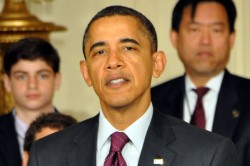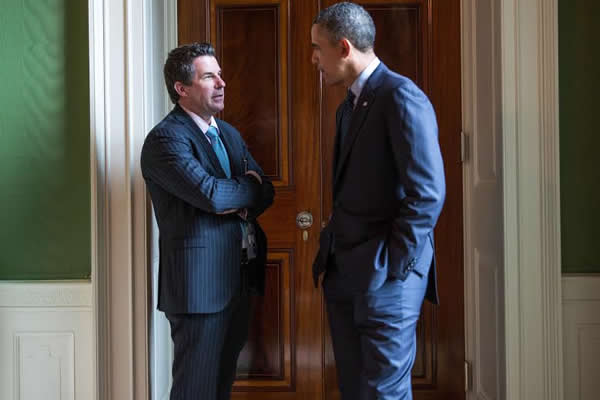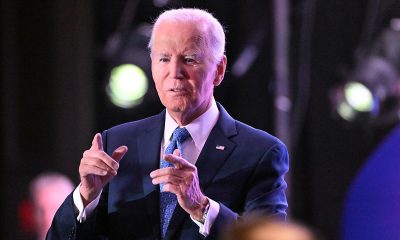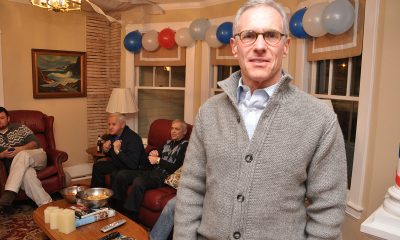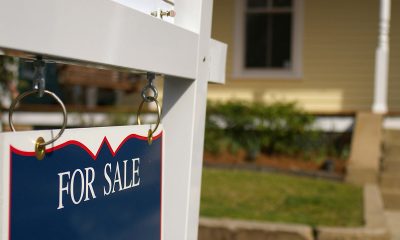National
Behind the scenes of the Obama campaign
LGBT staffers take key roles in 2012 effort

[Editor’s note: This is the second of a two-part series.]
Gay and lesbian staffers have taken key roles ranging from public outreach to battleground state strategy in the campaign already underway to re-elect President Obama to the White House in 2012.
The Washington Blade interviewed four gay and lesbian staffers working to re-elect Obama from the campaign headquarters in Chicago. This article is the second in a two-part series and features interviews with two of the campaign workers: Jamie Citron, LGBT vote director for Project Vote, and Karine Jean-Pierre, deputy battleground states director.
As LGBT vote director for Project Vote, Citron, who’s 28 and gay, is focused on monitoring the news developments and needs of the LGBT community. Established in August, Project Vote is the Obama campaign’s initiative aimed at encouraging participation among Democratic base constituencies, including LGBT Americans.
“Usually when I first make it into the office, it’s trying to catch up on the community,” Citron said. “It’s seeing what the conversations are, what the buzz was overnight on the listservs. It’s about reading the blogs and reading the LGBT press and seeing what the top lines of the stories are today.”
Other daily duties for Citron are meeting with the rest of the Project Vote team to discuss the best ways for taking the Obama campaign’s messages to the Democratic Party’s constituencies — as well as integrating the concerns of those constituencies into the campaign.
“Most important to me in my mind, each of us kind of figures out how we can work together across constituencies and make sure that we are engaging people as whole people instead of just focusing on one block at a time,” Citron said.
Citron’s role with the Obama campaign is similar to his previous role at the Democratic National Committee, where he served as director of the LGBT leadership council. Citron, who was also involved in the 2008 campaign, said he transferred back to the campaign to take a more direct role in the “engine working the campaign” to re-elect Obama.
A Chicago native, Citron said he also wanted to return to the Windy City to be closer to his boyfriend of three years, Tyler, who’s 30 and a lawyer living in the area. The two met in 2007 at an Obama fundraiser. Citron asked that Tyler’s last name be withheld.
The scope of Jean-Pierre’s role is somewhat larger as she develops campaign strategy for the battleground states in 2012. A key task: providing resources to states and figuring out the best way for them to get the word out for the campaign.
“To me, getting the president re-elected right now is the most important thing that I can be doing with my life,” Jean-Pierre said.
Jean-Pierre’s role is similar to her duties in 2008 as the Obama campaign’s southern political director. Upon Obama’s election, Jean-Pierre, a lesbian, became White House liaison to the Labor Department and later became regional director in the White House Office of Political Affairs.
For Jean-Pierre, the decision to work as part of the 2012 campaign as opposed to staying at the White House was an easy one.
Under the Obama administration, the LGBT community has seen significant achievements, including passage an expanded federal hate crimes law and repeal of “Don’t Ask, Don’t Tell.” In February, Obama declared that the Defense of Marriage Act is unconstitutional — after initially defending the anti-gay law in court — and has been filing legal briefs against the statute.
Still, Obama has yet to fulfill all promises to the LGBT community on which he campaigned in 2008. One notable outstanding goal is passage of the Employment Non-Discrimination Act. Obama’s lack of support of same-sex marriage continues to disappoint LGBT advocates.
But those working on the Obama campaign maintain has been a friend to the community and will continue to be an LGBT advocate during a second term in office.
As a recent example of support, Citron cited the news of the Obama administration reasserting that DOMA is unconstitutional in a legal brief against the anti-gay statute in the case of Windsor v. United States as well as an announcement that the Department of Homeland Security will work to take foreign nationals in same-sex relationships out of the deportation pipeline.
“I think the conversation between the LGBT community and the president certainly has been robust over the three years, and I think a lot of good things have come out about it,” Citron said. “Is the conversation finished? No. But I think it’s important that we acknowledge all that has come out from that and all that continues to come out.”
Campaign workers may also have their work cut out for them in convincing the general public to send the president back to the White House. According to recent polls, Obama’s approval ratings are at an all-time low. A Gallup poll published over the weekend found the president’s approval rating stands at just 42 percent.
Citron maintained LGBT people should be part of the effort to re-elect Obama.
“I think that the LGBT community could agree with me when I say I know that a second Obama term means more forward progress, whereas with a Republican entering the White House in 2012, not only does that signal the end to that progress, but it signals the start of a backwards march,” Citron said. “I think that’s something we should all be concerned about.”
The White House
EXCLUSIVE: Democracy Forward files FOIA lawsuit after HHS deadnames Rachel Levine
Trans former assistant health secretary’s name changed on official portrait

Democracy Forward, a national legal organization that works to advance democracy and social progress through litigation, policy and public education, and regulatory engagement, filed a lawsuit Friday in federal court seeking to compel the U.S. Department of Health and Human Services to release information related to the alteration of former Assistant Secretary for Health Adm. Rachel Levine’s official portrait caption.
The lawsuit comes in response to the slow pace of HHS’s handling of multiple Freedom of Information Act requests — requests that federal law requires agencies to respond to within 20 working days. While responses can take longer due to backlogs, high request volumes, or the need for extensive searches or consultations, Democracy Forward says HHS has failed to provide any substantive response.
Democracy Forward’s four unanswered FOIA requests, and the subsequent lawsuit against HHS, come days after someone in the Trump-Vance administration changed Levine’s official portrait in the Hubert H. Humphrey Building to display her deadname — the name she used before transitioning and has not used since 2011.
According to Democracy Forward, HHS “refused to release any records related to its morally wrong and offensive effort to alter former Assistant Secretary for Health Admiral Rachel Levine’s official portrait caption.” Levine was the highest-ranking openly transgender government official in U.S. history and served as assistant secretary for health and as an admiral in the U.S. Public Health Service Commissioned Corps from 2021 to 2025.
Democracy Forward President Skye Perryman spoke about the need to hold the Trump-Vance administration accountable for every official action, especially those that harm some of the most targeted Americans, including trans people.
“The question every American should be asking remains: what is the Trump-Vance administration hiding? For an administration that touts its anti-transgender animus and behavior so publicly, its stonewalling and silence when it comes to the people’s right to see public records about who was behind this decision is deafening,” Perryman said.
“The government’s obligation of transparency doesn’t disappear because the information sought relates to a trailblazing former federal official who is transgender. It’s not complicated — the public is entitled to know who is making decisions — especially decisions that seek to alter facts and reality, erase the identity of a person, and affect the nation’s commitment to civil rights and human dignity.”
“HHS’s refusal to respond to these lawful requests raises more serious concerns about transparency and accountability,” Perryman added. “The public has every right to demand answers — to know who is behind this hateful act — and we are going to court to get them.”
The lawsuit also raises questions about whether the alteration violated federal accuracy and privacy requirements governing Levine’s name, and whether the agency improperly classified the change as an “excepted activity” during a lapse in appropriations. By failing to make any determination or produce any records, Democracy Forward argues, HHS has violated its obligations under federal law.
The case, Democracy Forward Foundation v. U.S. Department of Health and Human Services, was filed in the U.S. District Court for the District of Columbia. The legal team includes Anisha Hindocha, Daniel McGrath, and Robin Thurston.
The Washington Blade reached out to HHS, but has not received any comment.
The lawsuit and four FOIA requests are below:
The White House
Empty seats, canceled shows plague Kennedy Center ahead of Trump renaming
It would take an act of Congress to officially rename the historic music venue, despite the Trump-appointed board’s decision.

The board of the Kennedy Center in Washington, D.C., voted to rename it the Trump-Kennedy Center, according to the White House Press Office.
White House Press Secretary Karoline Leavitt announced the decision in a post on X Thursday, thanking the president for his work on the cultural center “not only from the standpoint of its reconstruction, but also financially, and its reputation.”
Speaking to reporters later that day at the White House, Trump said he was “surprised” and “honored” by the board’s vote.
“This was brought up by one of the very distinguished board members, and they voted on it, and there’s a lot of board members, and they voted unanimously. So I was very honored,” he said.
Earlier this year, GOP Rep. Mike Simpson of Idaho introduced an amendment that would have renamed the building after first lady Melania Trump, later saying she had not been aware of his efforts prior to the amendment’s public introduction.
Despite the board’s vote (made up of Trump-appointed loyalists), the original laws guiding the creation of the Kennedy Center during the Eisenhower, Kennedy, and Johnson administrations explicitly prohibit renaming the building. Any change to its name would require an act of Congress.
Trump has exerted increasing control over the center in recent months. In February, he abruptly fired members of the Kennedy Center’s board and installed himself as chair, writing in a Truth Social post at the time, “At my direction, we are going to make the Kennedy Center in Washington D.C., GREAT AGAIN.”
In that post, Trump specifically cited his disapproval of the center’s decision to host drag shows.
He later secured more than $250 million from the Republican-controlled Congress for renovations to the building.
Since Trump’s takeover, sales of subscription packages are said to have declined, and several touring productions — including “Hamilton” — have canceled planned runs at the venue. Rows of empty seats have also been visible in the Concert Hall during performances by the National Symphony Orchestra.
“The Kennedy Center Board has no authority to actually rename the Kennedy Center in the absence of legislative action,” House Minority Leader Hakeem Jeffries told reporters.
For decades, the Kennedy Center has hosted performances by LGBTQ artists and companies, including openly queer musicians, choreographers, and playwrights whose work helped push LGBTQ stories into the cultural mainstream. Those artists include the Gay Men’s Chorus of Washington, Harvey Fierstein, and Tennessee Williams.
In more recent years, the center has increasingly served as a space for LGBTQ visibility and acceptance, particularly through Pride-adjacent programming and partnerships.
That legacy was on display at this year’s opening production of Les Misérables, when four drag performers — Tara Hoot, Vagenesis, Mari Con Carne, and King Ricky Rosé — attended in representation of Qommittee, a volunteer network uniting drag artists to support and defend one another amid growing conservative attacks.
“We walked in together so we would have an opportunity to get a response,” said Tara Hoot, who has performed at the Kennedy Center in full drag before. “It was all applause, cheers, and whistles, and remarkably it was half empty. I think that was season ticket holders kind of making their message in a different way.”
The creation of the Kennedy Center is outlined in U.S. Code, which formally designates the institution as the John F. Kennedy Center for the Performing Arts.
As a result, it appears unlikely that Congress will come together to pass legislation allowing the historic venue to be renamed.
The White House
HHS to restrict gender-affirming care for minors
Directive stems from President Donald Trump’s Jan. 28 executive order

The U.S. Department of Health and Human Services announced Thursday that it will pursue regulatory changes that would make gender-affirming healthcare for transgender children more difficult, if not impossible, to access.
The shift in federal healthcare policy stems directly from President Donald Trump’s Jan. 28 executive order, Protecting Children From Chemical and Surgical Mutilation, which formally establishes U.S. opposition to gender-affirming care and pledges to end federal funding for such treatments.
The executive order outlines a broader effort to align HHS with the Trump–Vance administration’s policy goals and executive actions. Those actions include defunding medical institutions that provide gender-affirming care to minors by restricting federal research and education grants, withdrawing the 2022 HHS guidance supporting gender-affirming care, requiring TRICARE and federal employee health plans to exclude coverage for gender-affirming treatments for minors, and directing the Justice Department to prioritize investigations and enforcement related to such care.
HHS has claimed that gender-affirming care can “expose them [children] to irreversible damage, including infertility, impaired sexual function, diminished bone density, altered brain development, and other irreversible physiological effects.” The nation’s health organization published a report in November, saying that evidence on pediatric gender-affirming care is “very uncertain.”
The Centers for Medicare and Medicaid Services is now in the process of proposing new rules that would bar hospitals from performing what the administration describes as sex-rejecting procedures on children under age 18 as a condition of participation in Medicare and Medicaid programs. Nearly all U.S. hospitals participate in Medicare and Medicaid. HHS said that “this action is designed to ensure that the U.S. government will not be in business with organizations that intentionally or unintentionally inflict permanent harm on children.”
Health and Human Services Secretary Robert F. Kennedy Jr. released a statement alongside the announcement.
“Under my leadership, and answering President Trump’s call to action, the federal government will do everything in its power to stop unsafe, irreversible practices that put our children at risk,” Kennedy said. “This administration will protect America’s most vulnerable. Our children deserve better — and we are delivering on that promise.”
Those claims stand in direct opposition to the positions of most major medical and healthcare organizations.
The American Medical Association, the nation’s largest and most influential physician organization, has repeatedly opposed measures that restrict access to trans healthcare.
“The AMA supports public and private health insurance coverage for treatment of gender dysphoria and opposes the denial of health insurance based on sexual orientation or gender identity,” a statement on the AMA’s website reads. “Improving access to gender-affirming care is an important means of improving health outcomes for the transgender population.”
Jennifer Levi, senior director of transgender and queer rights at GLBTQ Legal Advocates and Defenders, warned the proposed changes would cause significant harm.
“Parents of transgender children want what all parents want: to see their kids thrive and get the medical care they need. But this administration is putting the government between patients and their doctors. Parents witness every day how their children benefit from this care — care backed by decades of research and endorsed by major medical associations across the country. These proposed rules are not based on medical science. They are based on politics. And if allowed to take effect will serve only to drive up medical costs, harm vulnerable children, and deny families the care their doctors say they need. These rules elevate politics over children — and that is profoundly unAmerican.”
Human Rights Campaign President Kelley Robinson echoed Levi’s sentiments.
“The Trump administration is relentless in denying health care to this country, and especially the transgender community. Families deserve the freedom to go to the doctor and get the care that they need and to have agency over the health and wellbeing of their children,” Robinson said. “But these proposed actions would put Donald Trump and RFK Jr. in those doctor’s offices, ripping health care decisions from the hands of families and putting it in the grips of the anti-LGBTQ+ fringe. Make no mistake: these rules aim to completely cut off medically necessary care from children no matter where in this country they live. It’s the Trump administration dictating who gets their prescription filled and who has their next appointment canceled altogether.
The announcement comes just days after U.S. Rep. Marjorie Taylor Greene (R-Ga.) advanced legislation in Congress that would make it a felony to provide gender-affirming care to a child.

